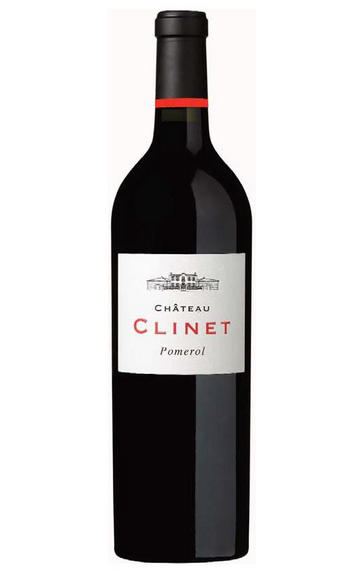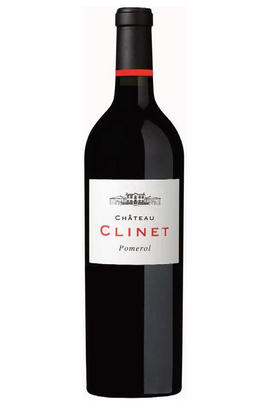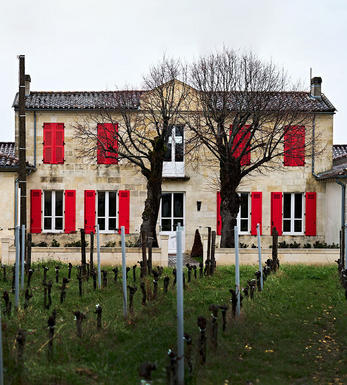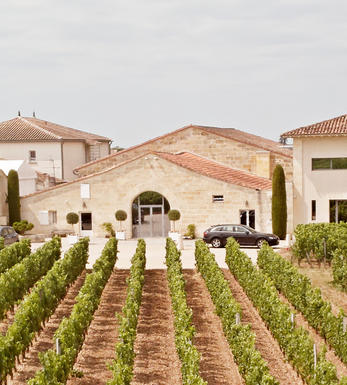
2009 Château Clinet, Pomerol, Bordeaux

Critics reviews
Lisa Perrotti-Brown - 14/03/2019
Jancis Robinson MW - jancisrobinson.com - January 2013
Thick and sweet and almost a cliché of Pomerol with its great meay richness and savour. Should calm down and become something quite exciting eventually, but quite tough on the end.
Jancis Robinson MW - jancisrobinson.com - April 2010
James Suckling - Wine Spectator - March 2010
Viscous and multi-dimensional with silky, sweet tannin, massive fruit concentration and full-bodied power, there are nearly 4,000 cases of this thick, juicy, perfect Clinet. It should drink well in 3-5 years and keep for 25-30.
Robert Parker - Wine Advocate - Feb 2012
About this WINE

Château Clinet
Château Clinet is a wine estate in Pomerol on the Right Bank of Bordeaux. It is owned and run by Ronan Laborde and his partner, Monique Bailly. Ronan took the helm here in 2004.
The estate’s 11 hectares of vines sit atop the famed Pomerol plateau. The vineyard is planted to a majority of Merlot (75%), which Ronan feels is highly suited to the plateau’s iron-rich clay soils. There is also 25% Cabernet Sauvignon. Though rare in Pomerol, Cabernet Sauvignon has long been an important aspect of Clinet’s character; it once made up 50% of the vineyard here, Ronan reports.
Clinet came to the attention of many collectors when its 1989 vintage received a 100-point score from the critic Robert Parker; it has remained one of Bordeaux’s most sought-after names ever since. Another perfect Parker score followed for the 2009 vintage.

Pomerol
Pomerol is the smallest of Bordeaux's major appellations, with about 150 producers and approximately 740 hectares of vineyards. It is home to many bijou domaines, many of which produce little more than 1,000 cases per annum.
Both the topography and architecture of the region is unremarkable, but the style of the wines is most individual. The finest vineyards are planted on a seam of rich clay which extends across the gently-elevated plateau of Pomerol, which runs from the north-eastern boundary of St Emilion. On the sides of the plateau, the soil becomes sandier and the wines lighter.
There is one satellite region to the immediate north, Lalande-de-Pomerol whose wines are stylistically very similar, if sometimes lacking the finesse of its neighbour. There has never been a classification of Pomerol wines.
Recommended Châteaux : Ch. Pétrus, Vieux Ch. Certan, Le Pin, Ch. L’Eglise-Clinet, Ch. La Conseillante, Ch. L’Evangile, Ch. Lafleur, Trotanoy, Ch. Nenin, Ch. Beauregard, Ch. Feytit-Clinet, Le Gay.

Cabernet Sauvignon Blend
Cabernet Sauvignon lends itself particularly well in blends with Merlot. This is actually the archetypal Bordeaux blend, though in different proportions in the sub-regions and sometimes topped up with Cabernet Franc, Malbec, and Petit Verdot.
In the Médoc and Graves the percentage of Cabernet Sauvignon in the blend can range from 95% (Mouton-Rothschild) to as low as 40%. It is particularly suited to the dry, warm, free- draining, gravel-rich soils and is responsible for the redolent cassis characteristics as well as the depth of colour, tannic structure and pronounced acidity of Médoc wines. However 100% Cabernet Sauvignon wines can be slightly hollow-tasting in the middle palate and Merlot with its generous, fleshy fruit flavours acts as a perfect foil by filling in this cavity.
In St-Emilion and Pomerol, the blends are Merlot dominated as Cabernet Sauvignon can struggle to ripen there - when it is included, it adds structure and body to the wine. Sassicaia is the most famous Bordeaux blend in Italy and has spawned many imitations, whereby the blend is now firmly established in the New World and particularly in California and Australia.


Buying options
Add to wishlist
Description
Deep garnet colored, the 2009 Clinet is showing quite a lot of evolution on the nose with notes of new leather, fried spices and dried herbs over a core of dried mulberries and prunes with a touch of redcurrant jelly. Full-bodied and decadently fruited with loads of mature, savory layers, it has a chewy texture and finishes on a dried herbs note.
Lisa Perrotti-Brown - 14/03/2019
wine at a glance
Delivery and quality guarantee